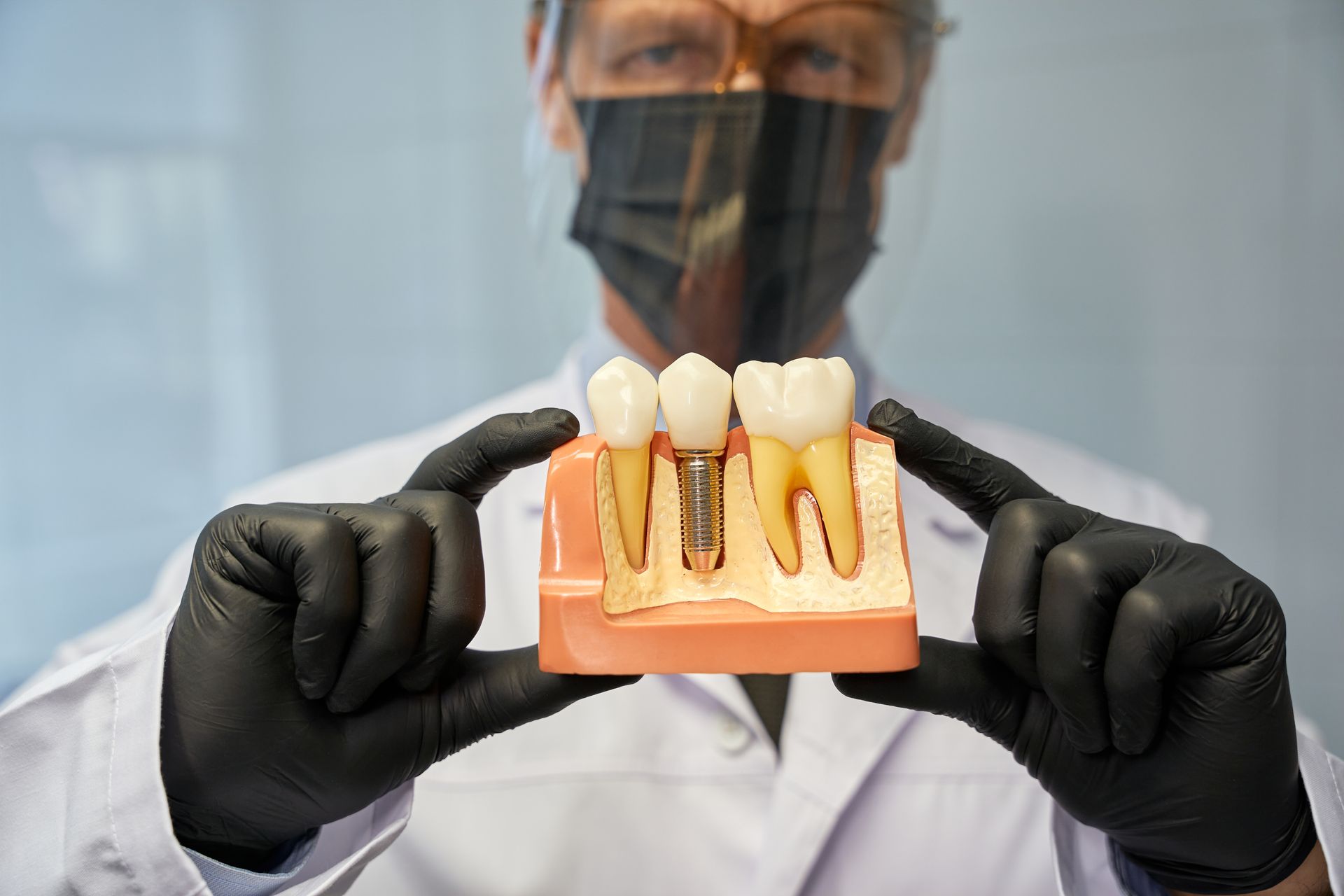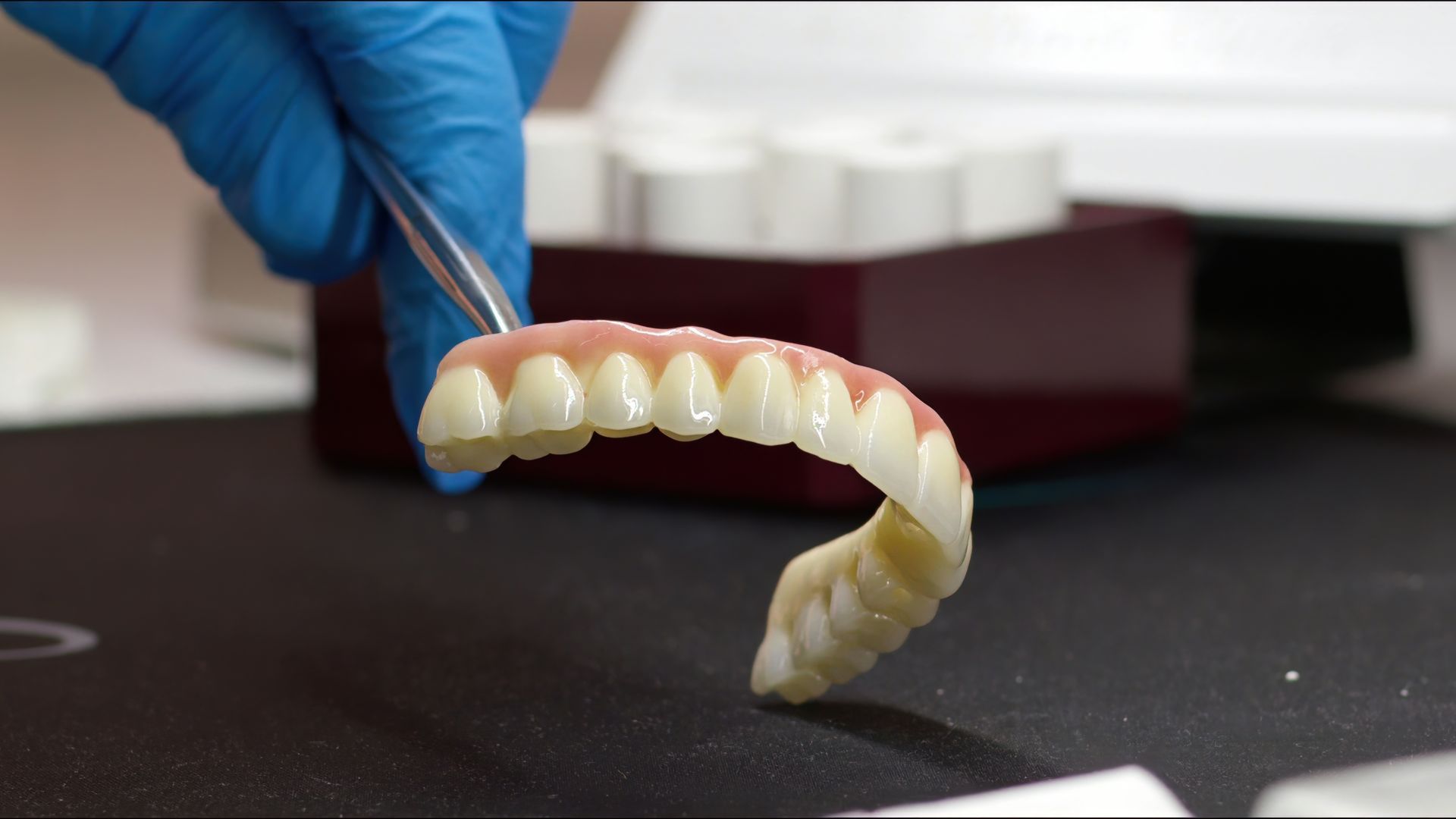Do Dental Implants Fail? What You Need to Know

At Tampa Dental Implant Center, we’ve successfully placed thousands of implants for patients across Florida. Our team of board-certified specialists including oral surgeons, prosthodontists, and periodontists has decades of combined experience diagnosing, placing, and maintaining dental implants. We also routinely help patients who come to us after complications elsewhere. This gives us unique insight into why dental implants sometimes fail and more importantly, how they can succeed.
This blog is designed to answer one of the most common questions we hear:
“Do dental implants fail?”
The short answer is yes, they can. But when implants are placed by an experienced, qualified provider and supported with proper care, the failure rate is extremely low.
In this article, we’ll explain:
- What defines success vs. failure
- Why failures happen
- How to spot warning signs early
- What to do if you suspect an issue
- How to dramatically reduce your risk of implant failure
Understanding Dental Implant Success and Failure
What Is a Dental Implant?
A dental implant is a small titanium or zirconia post surgically inserted into the jawbone to serve as a replacement for the root of a missing tooth. Once placed, the implant undergoes a biological bonding process with the bone called osseointegration. After healing, the implant is topped with a crown, bridge, or denture.
Unlike dentures or bridges, dental implants fuse directly with the bone, providing long-lasting, stable, and natural-feeling tooth replacement.
How Success Is Typically Measured
A dental implant is considered successful when:
- It integrates with the jawbone and remains stable
- There’s no persistent pain, infection, or inflammation
- The surrounding bone and gum tissue remain healthy
- It continues to function properly under bite pressure
Clinical studies show dental implants have a
success rate of 95–98% over 10+ years, especially when performed by qualified professionals. However, when complications do arise, they often stem from a few preventable causes.

Why Dental Implants Fail
Failures are generally classified as either early or late depending on when they occur in relation to the surgery.
Early vs. Late Implant Failure
- Early failures happen within the first 1–3 months post-surgery, usually during the healing or osseointegration phase.
- Late failures happen months or years later, often due to infection, bone loss, or stress on the implant.
Understanding the underlying cause is crucial for prevention and treatment.
Biological Causes of Failure
Peri-implantitis
Peri-implantitis is the most common cause of late implant failure. It’s a bacterial infection that causes inflammation and progressive bone loss around the implant.
It’s similar to periodontitis (gum disease) but affects the tissues surrounding an implant. Left untreated, it can destroy the support structures and cause the implant to loosen.
Signs may include:
- Bleeding or pus around the implant
- Gum recession
- Deep probing pockets
- Visible bone loss on X-rays
Failed Osseointegration
Sometimes, the implant fails to bond with the bone. This is usually discovered during the early months post-op. Osseointegration failure may occur due to:
- Excessive micro-movement of the implant
- Infection
- Poor bone quality
- Smoking
- Certain medications or systemic diseases
Bone Loss Around the Implant
Bone is essential for implant stability. When bone deteriorates due to infection, trauma, or medical conditions the implant can lose its anchorage. This is often progressive and painless at first, making it hard to detect without professional evaluation.
Mechanical or Procedural Factors
Improper Placement or Angulation
If the implant is placed at the wrong angle or depth, it may cause stress on surrounding bone or gums, leading to failure. Poor placement also affects aesthetics and bite function.
Excessive Bite Force or Overloading
An implant placed under too much stress too early (before healing) or over time (e.g., from teeth grinding or improper crown fit) can loosen or fail.
Low-Quality Materials
Using substandard or incompatible implant components can lead to corrosion, fracture, or poorosseointegration.
Inadequate Treatment Planning
Failure to address underlying issues such as bone loss, bruxism, or bite alignment prior to implant surgery can increase risks significantly.
Patient-Related Risk Factors
Smoking
Smoking is one of the biggest risk factors for implant failure. It:
- Impairs blood flow and healing
- Increases risk of infection
- Negatively impacts osseointegration
Smokers are up to
3 times more likely to experience implant failure.
Uncontrolled Diabetes
Poorly controlled diabetes compromises immune function and delays healing. It’s essential that blood sugar levels be managed prior to and after implant surgery.
Poor Oral Hygiene
Plaque and bacteria around the implant can lead to mucositis and peri-implantitis. Consistent at-home care and professional cleanings are essential.
Bone Density and Volume
Patients with insufficient jawbone volume or density (due to age, gum disease, or tooth loss) may require bone grafting before implant placement. Skipping this step raises the chance of failure.
Certain Medications
Drugs like bisphosphonates, immunosuppressants, and SSRIs may affect bone metabolism and healing, increasing risk.
Signs of a Failing Dental Implant
Physical Symptoms to Watch For
Early detection is crucial. If you experience any of the following, contact your provider immediately:
- Persistent discomfort or throbbing pain
- Swollen, red, or bleeding gums
- A bad taste or pus around the implant
- Difficulty chewing
- Gum recession around the crown
- The implant or crown feels loose
- Clicking or shifting sensation when biting
Diagnostic Clues from Your Dentist
At your follow-up visits, we use several tools to evaluate implant health:
- X-rays to assess bone level and structure
- Probing around the implant to detect deep pockets
- Mobility testing (implants should not move)
- Checking crown fit for proper occlusion and contact points
Even in the absence of symptoms, these diagnostics can help detect early-stage complications.
How to Prevent Implant Failure
Most implant failures are entirely preventable. Prevention starts with a comprehensive treatment plan and continues with long-term care and maintenance.
Pre-Surgical Planning and Assessment
A thorough evaluation before implant surgery includes:
- Full dental and medical history
- 3D cone-beam CT scans to assess bone volume and nerve positioning
- Bite analysis and smile design
- Bone grafting or sinus lift procedures if needed
- Customized surgical guide to ensure precise placement
Planning helps minimize mechanical complications and sets the foundation for a successful outcome.
Post-Surgical Care and Maintenance
Following surgery, you’ll receive detailed instructions on how to care for the site during healing. These include:
- Using antiseptic rinses as directed
- Avoiding the surgical site while brushing for the first few days
- Taking all medications as prescribed
- Eating soft foods and avoiding hard/crunchy items
- No smoking or alcohol during the healing period
- Attending all follow-up visits for evaluation
Lifestyle and Long-Term Habits
Dental implants are a long-term investment and like any investment, they require upkeep.
To maintain your implant long-term:
- Brush at least twice daily and floss around the implant crown
- Use an antimicrobial rinse if recommended
- Attend dental cleanings every 3–6 months
- Manage systemic conditions (like diabetes, osteoporosis)
- Quit smoking permanently
- Wear a custom night guard if you grind your teeth
- Avoid chewing ice or using teeth as tools
Patients who follow these habits can expect their implants to last 15–25 years or more.
What to Do If Your Implant Fails
Can a Failed Implant Be Replaced?
In many cases, yes. But timing and treatment depend on the cause of failure.
Options include:
- Removing the implant
- Cleaning and decontaminating the site
- Bone grafting if significant bone was lost
- Waiting for healing before placing a new implant
- Switching to alternative treatments if needed (e.g., bridges or partial dentures)
Treatment Options and Next Steps
If your implant fails:
- Immediate evaluation: Your dentist will examine the area, take X-rays, and diagnose the cause.
- Removal and healing: The implant may be removed and the site allowed to heal.
- Grafting (if necessary): A bone graft may be placed to rebuild the area.
- Re-evaluation: After healing, your dentist will assess if you’re ready for a new implant.
- Re-implantation or alternatives: If the area is healthy, a new implant may be placed. If not, options like bridges or dentures will be considered.
For patients missing multiple teeth, procedures like All-on-4 or All-on-6 may provide comprehensive full teeth replacement solutions.
Conclusion
So, do dental implants fail?
Yes, but
not often and in most cases,
failure is preventable.
By understanding the risks, recognizing early symptoms, and partnering with an experienced dental team, you can dramatically reduce the chance of complications. Dental implants remain the most durable, comfortable, and long-lasting solution for tooth replacement when handled properly.
At Tampa Dental Implant Center, we’re committed to providing honest, expert guidance whether you’re considering your first implant or dealing with a complication from previous care. We take pride in helping patients make informed decisions with no pressure and full transparency.
If you're considering single tooth replacement or have questions about the cost of dental implants, our team is here to help.
Schedule a consultation today
to discuss your dental implant options or concerns. Let us help you protect your smile for life.






